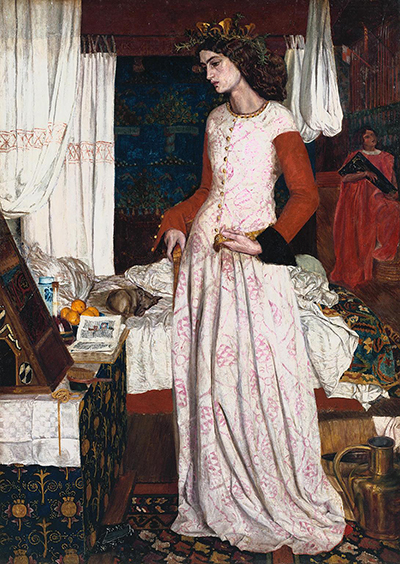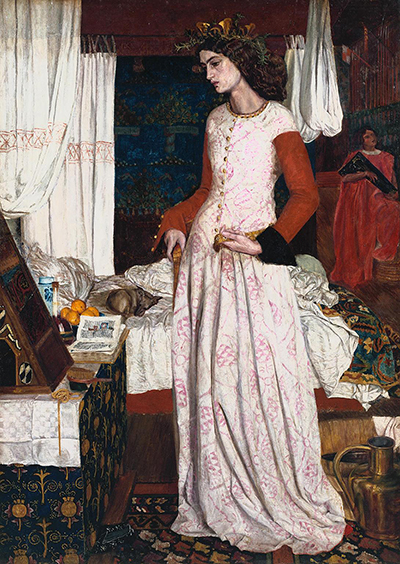Painting was not a major focus for William Morris once his career was in full flow and the artwork that we feature here is one of the very few that remain from his entire career. Whilst specialising in textiles, drawings and tapestry, there is still some merit to be gained from studying his short output of work in this medium.
William Morris' initial artistic studies were in architecture, with some painting too. This opened his eyes to the possibilities of a career in this industry as well as unleashing some of his innate, creative juices. He soon moved on, however, once a real interest in traditional techniques of embroidery took hold. He also found that tapestry could embrace his love for the local environment too, and in collaborating with other respected painters, he never had a real need to return to this area of expertise. The companies in which he worked (Morris, Marshall, Faulkner & Co. and Morris & Co.) prefered to assign the tasks according to who specialised in them in order to ensure the highest standards of quality possible.
La Belle Iseult from 1858 is the painting displayed in this page. Morris used oil on canvas to put this piece together and it is now part of the Tate collection in the UK. It is believed to be the only painting fully completed by the artist, which is an extraordinary statistic considering the huge output that he delivered during his lifetime across other mediums. The subject found in this portrait is of Queen Guenevere and the style and content used here is very typical of the Pre-Raphaelite Brotherhood. Perhaps the closest similiarity could be with the work of JW Waterhouse, although he was only on the fringes on the group and arrived around a generation after most of the main contributors to this group.
Modelling in this painting is Jane Burden, later to become the artist's wife. She wears medieval clothing in order to portray the role of Queen Guenevere, whom he featured in poetry at around the same period. Other opinions have suggested that this is Iseult contemplating the exile of Tristram. Morris was passionate about British poetry, literature and also medieval passages and so several suggestions can easily be argued for. A more careful study of this painting over recent years has identified several additional features in the composition which further back up this theory around Iseult, such as the sprigs of rosemary in her crown and also the words on her mirror which translates as grief.
It seems that patterned designs would make their way into everything that Morris produced, even this painting. There are several items of the interior that remind us of his work in floral illustration, such as the carpet in the foreground, several covers lying on furniture and also the curtains in the far background. The Pre-Raphaelite style was to capture women in a flattering manner, often looking fairly reflective in their thoughts. Many appreciate this type of art because of the beautiful detail found in these scenes as well as the femininity that each of these artists deliver in their stunning young maidens. They all tended to find inspiration from both British literature and also medieval and mythological passages.
It is generally accepted that the artist spent several months on this single painting, constantly adapting and tweaking elements to it. He did not feel as comfortable as a painter as he did with embroidery and design. This could explain why he never returned to this medium and concentrated on all the other avenues of creativity that he found more inspiring and also better suited to his natural talents. Painting was the main focus of the Pre-Raphaelite movement and so it was inevitable that Morris would spend part of his career concentrating on the complex techniques found within it, but he never truly felt at home and soon moved in other directions.





